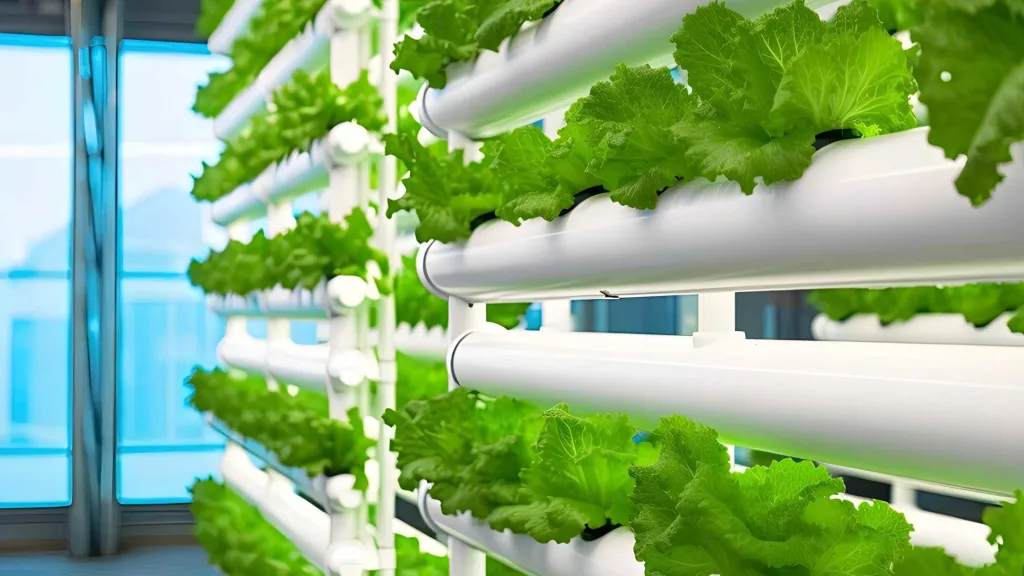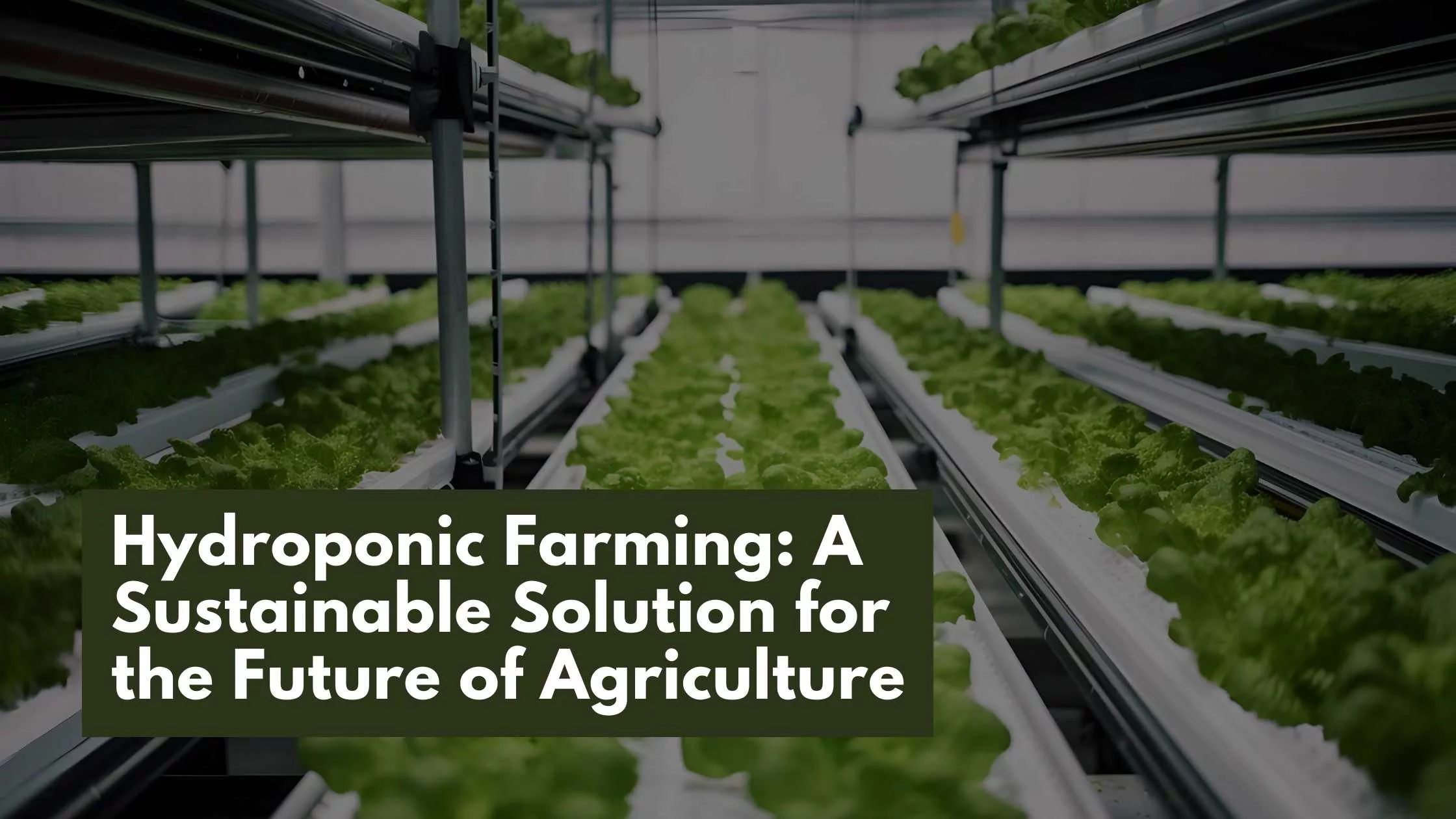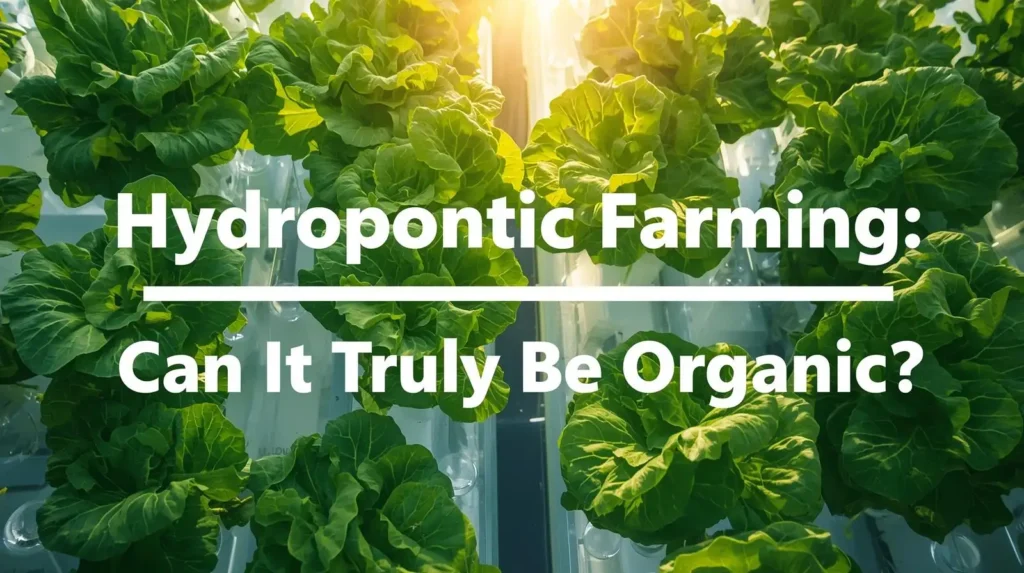The demand for sustainable farming practices is more significant than ever as the world’s population increases rapidly. Traditional agricultural practices must be revised to fulfil the world’s food needs as they rely on rich land and a plentiful water supply. However, a cutting-edge strategy, hydroponic farming, is a workable answer for fulfilling the demand for and production of sustainable food.
In this blog, we will explore the concept of hydroponics, its benefits, and its potential to revolutionize the future of agriculture.
Understanding Hydroponic Farming
Hydroponics involves growing plants in a nutrient-rich water solution without soil. Unlike traditional farming, hydroponics includes feeding all essential nutrients directly to the plant roots through a water-based solution. It depends on the soil as a substrate for plant development. Generally, inert substances like perlite, rock wool, or coconut coir support the plants. They give their roots continuous access to oxygen, water, and vital nutrients.
You may also read: Modern agriculture
Advantages of Hydroponics Farming
- Effective Water Use:
In many regions of the world, water shortage is a significant issue. Since the water in the system is recirculated and there is no loss due to evaporation or runoff, hydroponics consumes up to 90% less water than conventional agricultural techniques. Because of this, hydroponics is an excellent option for areas with a water deficit. - Higher Crop Yields:
Hydroponic systems give plants the best possible growing circumstances, including the ideal ratio of nutrients, pH levels, and sunlight. Consequently, compared to conventional farming, plants develop more quickly and yield significant food. Additionally, hydroponics enables year-round growth, avoiding seasonal restrictions and increasing output. - Space efficiency:
Hydroponic systems can be arranged vertically to make effective use of available space. This vertical farming method is appropriate for urban settings with limited land since it enables the growth of more plants in a smaller space. Hydroponics can dramatically boost the agricultural production of urban areas by using vertical space. - Reduced Environmental Impact:
Since the regulated atmosphere helps avoid bug infestations, hydroponic farming uses fewer pesticides and herbicides. Furthermore, the lack of soil prevents the possibility of soil erosion and pollution, minimizing the detrimental effects on neighbouring ecosystems. Additionally, since hydroponics does not require giant machinery, it uses less energy and emits less greenhouse gases.
- Flexibility and Adaptability:
Hydroponic systems may be customized to accommodate different plant types and climatic conditions. Farmers may manage variables like temperature, lighting, pH levels, and nutrient content to create the ideal growth environment for a particular crop. Because of its adaptability, hydroponics may be used to grow crops in various environments and temperatures. Hydroponics Farming. - Consistent Quality and Flavour:
Hydroponics’ regulated environment ensures that plants get the correct nutrients, producing consistently high-quality produce. As a result, customers and chefs who appreciate the flavour and nutritional value of fresh, locally grown food will find hydroponically farmed fruit quite appealing. - Challenges and Solutions
While hydroponic farming has many advantages, there are some difficulties as well. Following are some typical challenges encountered in hydroponics and the solutions created to address them:
- Initial Expense: Hydroponics Farming must first invest significantly in infrastructure, gear, and technology. However, over time, improvements in hydroponic technology have reduced the cost and increased the availability of systems. Additionally, hydroponics’ potential profitability and long-term advantages frequently surpass its early expenses.
- Technical know-how: Managing intricate systems and comprehending the nuances of plant nutrition, water quality, and environmental management are critical components of hydroponics. For prospective hydroponic farmers, acquiring the required technical know-how and competence might be challenging. Educational programs, training seminars, and online resources are available to assist people in developing the necessary skills and knowledge to solve this situation.
- Technical Expertise: Hydroponic systems depend on artificial lighting, which may use a lot of electricity. However, the development of energy-saving LED lighting and the incorporation of renewable energy sources, such as solar panels, has assisted in lowering the hydroponic farms’ overall energy use. Hydroponics’ energy efficiency is constantly being improved through ongoing study and innovation.
- Energy consumption: In Hydroponics Farming, it’s essential to maintain a well-balanced nutrient solution. Testing and modifications must be made regularly to monitor nutritional levels, pH, and electrical conductivity. Automated nutrient delivery systems and cutting-edge monitoring technologies have been created to make nutrient management easier and guarantee ideal plant health.
- Waste management: The extra nutrient solutions and plant remains produced by hydroponics are waste. Hydroponic enterprises may reduce waste and develop a circular economy using recycling technologies like nutrient solution recovery and composting. These procedures help hydroponic farming remain sustainable overall.

Hydroponics in Action: Real-World Examples
- Aero Farms: One of the world’s biggest indoor vertical farming businesses is AeroFarms, headquartered in Newark, New Jersey. In a regulated atmosphere, they cultivate leafy greens and herbs using aeroponic technology, a branch of hydroponics. Compared to conventional agriculture, AeroFarms’ novel method enables year-round food production with a substantially lower water footprint.
- Plenty: Hydroponic systems are used by Plenty, a vertical farming firm with its headquarters in California, to grow various crops. Their growing structures are vertically stacked to make the most of available space, and cutting-edge data analytics and machine learning algorithms optimize plant growth and resource use. Urban areas can now get fresh, locally sourced food thanks to Plenty, which also works to reduce its adverse environmental effects.
- Green Sense Farms: Based in Indiana, Green Sense Farms is one of the country’s most giant indoor hydroponic farms. They combine hydroponic and aeroponic systems to cultivate various leafy greens, herbs, and microgreens. Hydroponic agriculture’s promise for sustainability is demonstrated by the farm’s efficient water use and energy-saving devices.
You may also read: Causes of Biodiversity Loss
The Future of Hydroponics
There is a lot of potential for hydroponic farming to influence agriculture in the future. Hydroponics offers a long-term answer to problems including climate change, population increase, and a lack of arable land. Hydroponic systems will become more effective and productive as technology, automation, and data-driven strategies advance.
In addition, combining hydroponics with other cutting-edge technologies like blockchain, robots, and AI can completely transform the food supply chain. These technologies can increase transparency, traceability, and efficiency in food production and distribution through resource allocation optimization and exact tracking of goods.
Conclusion
A fascinating and environmentally friendly alternative to conventional agriculture is hydroponic farming. It is a desirable choice for food production in the future since it can offer better yields with less water, space, and environmental effects. Hydroponics provides a creative and viable route towards a more sustainable and resilient agriculture system as we work to feed a growing global population while protecting natural resources. Adopting hydroponics would help solve problems with food security while also making the earth greener and healthier for the next generations.




Your point of view caught my eye and was very interesting. Thanks. I have a question for you.